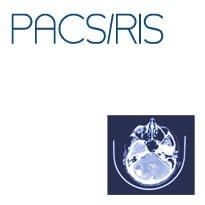NHS trusts looking for new digital imaging systems have been encouraged to explore the “opportunities” that are currently available, instead of focusing solely on price.
Delegates at the annual joint UK Radiological Congress held in Manchester this week were told to think “big and bold” as local service provider contracts for picture archiving and communications systems come to an end over the next two years.
Dr Charles Gutteridge, national clinical director for informatics at the Department of Health, told delegates that “PACS was one of the biggest successes” of the National Programme for IT in the NHS, with every hospital successfully implementing a system. But he was keen to emphasise that they could be improved.
“We have got to a position that I think is a fantastic platform for the future, which is four cluster data stores with at least 2m studies a month being archived; tonnes of data.
"But I think it’s fair to say that in informatics terms nobody is using that data effectively,” he said.
“The national programme is over and the challenge for us over the next 20 or 30 years is how we use informatics and the data around it to help patients,” he added.
Dr Gutteridge explained that “innovation had been bottled up over the last ten years” and that the majority of healthcare professionals were using systems that were commissioned in 2002, before the explosion of Google, Facebook and other social media.
He told the PACS/RIS community that going forward it should consider two aims that “jumped out” of the NHS information strategy published last month; “firstly that data should be machine readable and the other that it should be personalised to the patient.”
“To round up how we improve radiology… at the moment the images are pretty uninterpretable for a patient.
"We could improve this by providing the semantic data you have derived from the images into discharge summaries so that when a patient is looking at the images there is something there for them to read,” he said.
Mary Barber, programme director for PACS at NHS Connecting for Health, said that while trusts should be “nervous” at procuring new systems, the digital age would provide plenty of opportunities over the next five to ten years.
“Digital imaging will become part of a patient’s health record and that health record will become available to the patient and to everybody who cares for the patient,” she said. “While that is something we haven’t succeeded with at CfH, it is still there as a challenge.”
Comparing hospital treatment to a visit to a hair salon, Barber, who is leaving her post shortly, said patients should be able to have their imaging done with results and feedback provided in the same time as it takes for her “hair to be coloured.”
Dr Tony Newman-Sanders, national PACS clinical lead responsible for London, told trusts that when procuring replacement systems the “challenge” is to be “creative” when looking at the cost.
“There will be lots of financial directors who will say blimey that looks like good value I think I’ll take that very cheap like-for-like replacement, maybe lose a bit of functionality, but we will take a quick saving in the immediate procurement.
“A plea if you still can and if you still have the energy to try and look at some of the blue sky opportunities that there are available,” he added.
The future of PACS/RIS contracts is the focus of EHI’s latest special report.

